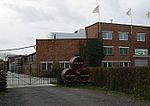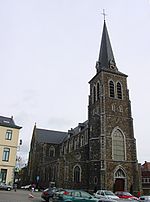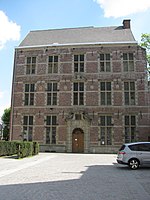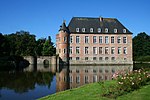Tubize
Cities in WalloniaMunicipalities of Walloon BrabantPages including recorded pronunciationsPages with Dutch IPAPages with French IPA ... and 2 more
TubizeWalloon Brabant geography stubs

Tubize (French pronunciation: [tybiz] ; Dutch: Tubeke [ˈtybeːkə]) is a city and municipality of Wallonia located in the Belgian province of Walloon Brabant. On January 1, 2006 Tubize had a total population of 22,335. The total area is 32.66 km2 which gives a population density of 684 inhabitants per km2. The municipality includes the districts of Clabecq, Oisquercq, Saintes, and Tubize. Bordering Flanders, the town is home to a minority of Dutch-speakers.
Excerpt from the Wikipedia article Tubize (License: CC BY-SA 3.0, Authors, Images).Tubize
Grand-Place de Tubize,
Geographical coordinates (GPS) Address Nearby Places Show on map
Geographical coordinates (GPS)
| Latitude | Longitude |
|---|---|
| N 50.693 ° | E 4.2046666666667 ° |
Address
Grand-Place de Tubize
Grand-Place de Tubize
1480 (Tubize)
Walloon Brabant, Belgium
Open on Google Maps







